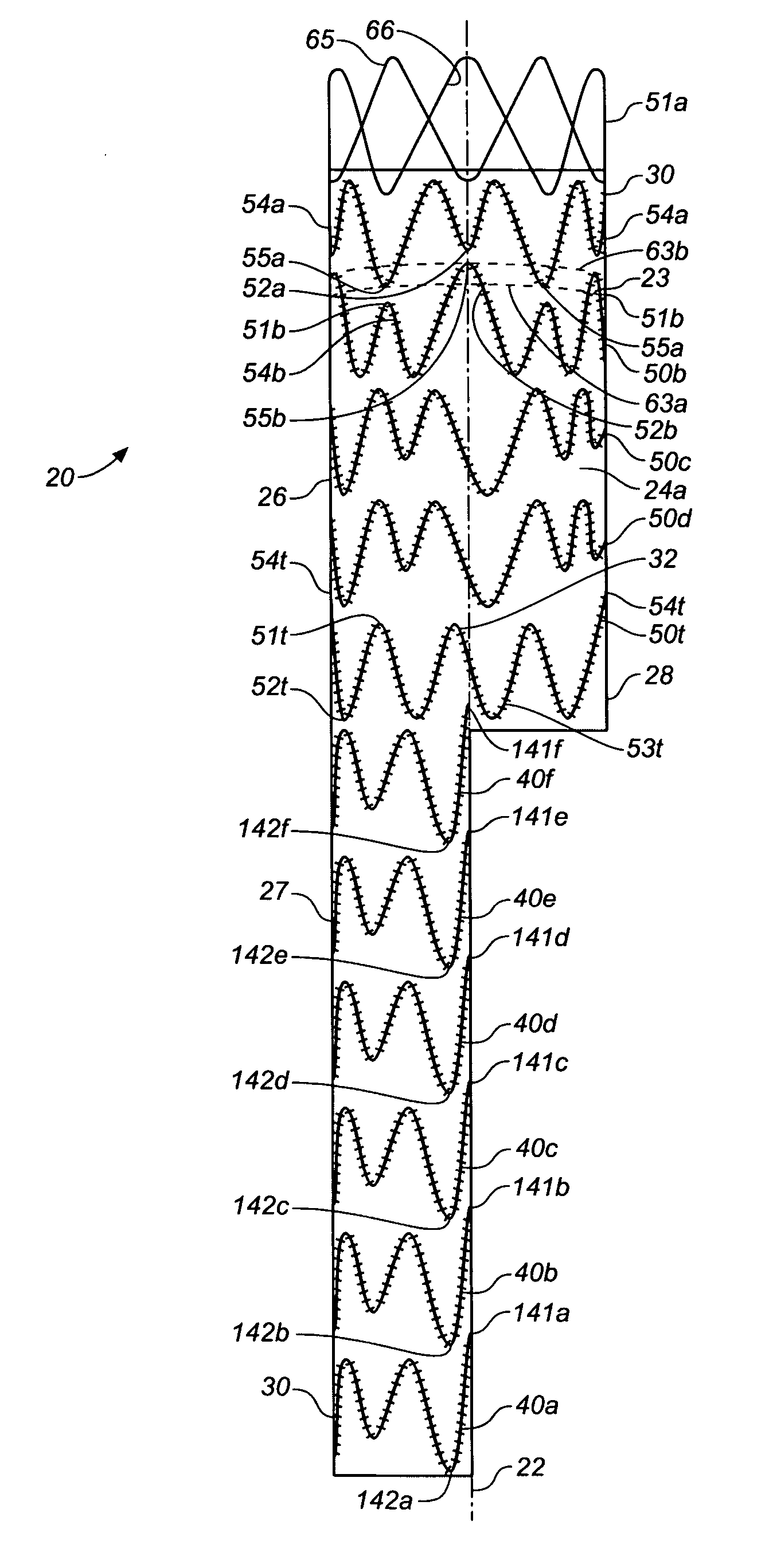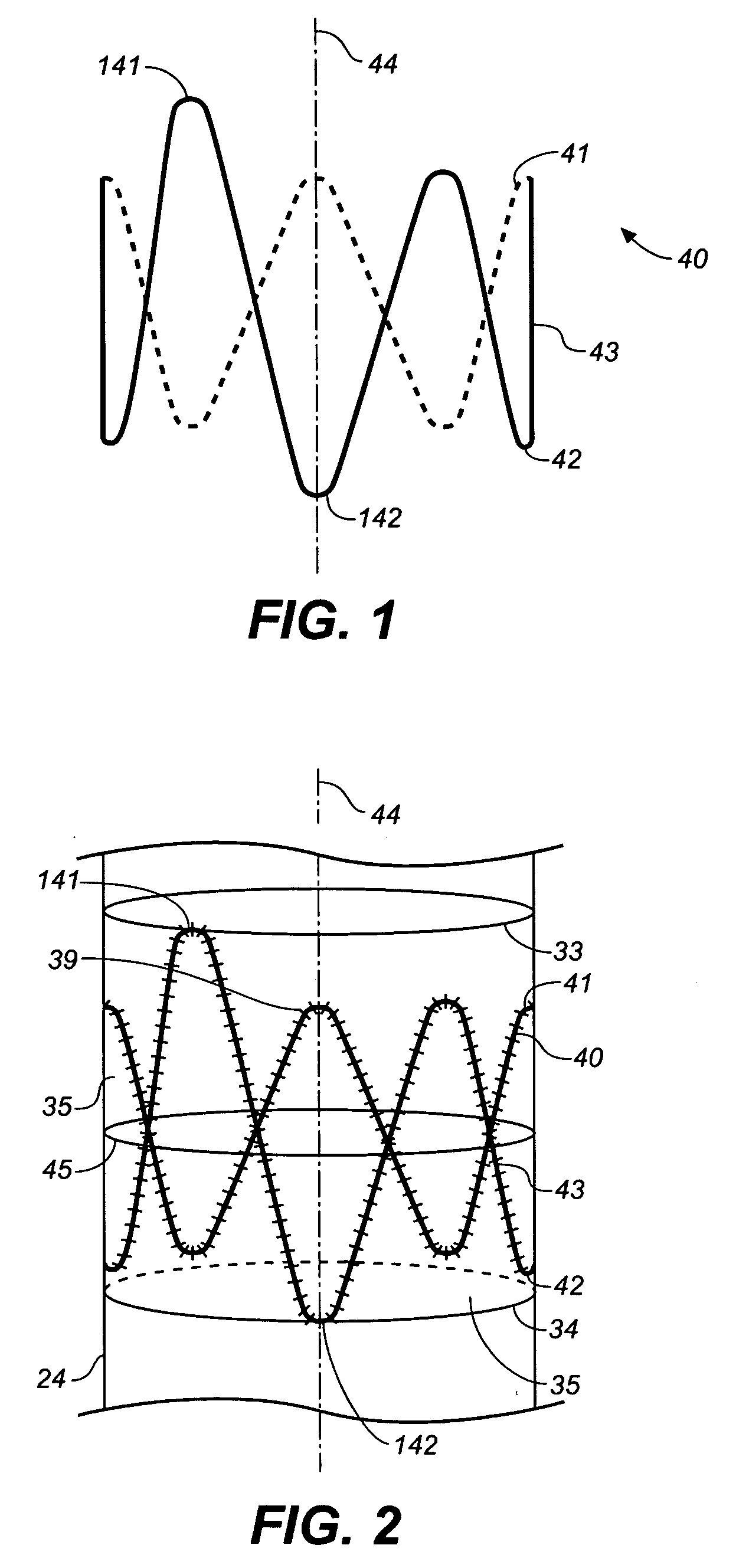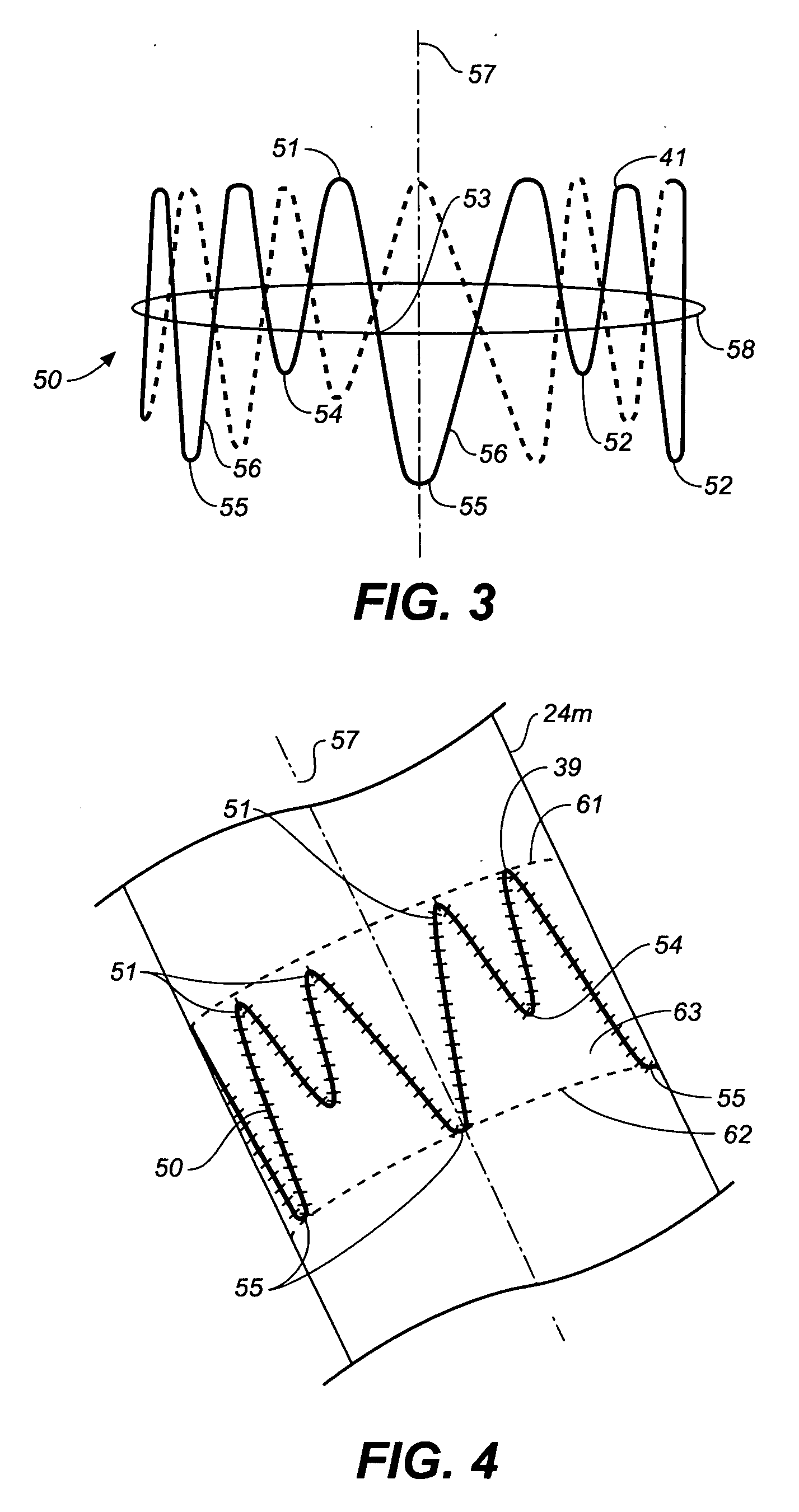[0010] An embodiment according to the present invention provides an improved endoluminal prosthesis having a tubular graft and a support structure attached to the tubular graft and configured in a manner that provides columnar strength while providing improved device flexibility, and a maintaining a relatively small pre-deployed, collapsed profile.
[0012] The annular support members each comprise an annular expandable member formed by an undulating or sinusoidal patterned wire ring. The pattern is formed by a plurality of straight spokes connected by a plurality of apices (alternating crests and troughs) to form a closed ring with an axis extending longitudinally therethrough. Preferably the annular support members are radially compressible springs biased in a radially outward direction, which when released, bias the prosthesis into conforming fixed engagement with an interior surface of the vessel. Annular springs are provided particularly where the annular support member is used to create a seal between the prosthesis and the inner wall of a body lumen. The annular springs are preferably constructed of Nitinol. Examples of such spring means construction are described, for example, in U.S. Pat. Nos. 5,713,917 and 5,824,041 incorporated herein by reference. When used in an
aneurysm exclusion device, the spring has sufficient radial
spring force and flexibility to conformingly engage the prosthesis with the body lumen inner wall, to avoid excessive leakage, and prevent pressurization of the
aneurysm, i.e., to provide a leak resistant seal. Although some leakage of blood or other
body fluid may occur into the aneurysm isolated by the prosthesis, an optimal seal will reduce the chances of aneurysm pressurization and resulting rupture.
[0013] The annular support members are attached or mechanically coupled to the graft material along the tubular graft by attaching overlapping adjacent apices of adjacent support members within the circumferential areas defined by the support member. The support member may be attached to the graft by various means, such as, for example, by stitching onto either the inside or outside of the tubular graft. Each of the support members defines a corresponding circumferential area of graft material around it. In one embodiment, at least one of the apices of an annular support member is mechanically coupled to the circumferential graft area of an adjacent annular support member. In an embodiment according to the invention, at least one of the apices of the annular support member of the invention extends axially beyond the other apices of that annular support member. In this embodiment, the longer crest(s) and / or trough(s) extend into and are attached to the circumferential graft area of an adjacent annular member. The overlap on the graft thus provides columnar strength along the length of the graft from one support structure through the graft and to the next support structure. The overlapping structure also prevents collapse of the graft between support structures. Further, providing fewer
overlapping structures allows greater radial
compressibility of the prosthesis.
[0014] In one embodiment according to the invention, the apices, or crests and troughs of at least one support structure overlap lengthwise (i.e., with respect to the length or axis of the prosthesis) an apex of an adjacent support structure. Such an apex is offset from adjacent apices of the adjacent support structure about the circumferential area of the adjacent support structure. The troughs of a support structure are staggered about the circumference from the crests of an adjacent support structure so that the support structures do not physically touch. In one embodiment, longer crests or longer troughs of each of the support members are substantially aligned with the other longer crests or longer troughs of adjacent support structures, respectively, to provide column strength along a desired length of the prosthesis.
[0017] The present invention in the embodiment of an
Abdominal Aortic Aneurysm (“AAA”) device, the prosthesis is able withstand the loads applied during deployment and the cyclical loading in the body for a reasonable duration and provides sealing attachment of the annular support structure to the inner wall of the body lumen.
[0019] The endoluminal prosthesis may be in the form of either a straight single-limb tubular member or a generally Y-shaped bifurcated tubular member having a
trunk joining at a graft junction with a pair of lateral limbs, namely an ipsilateral limb and a contralateral limb. In a bifurcated prosthesis, the proximal portion of the prosthesis comprises a
trunk with a proximal opening and the
distal portion is branched into at least two branches with distal openings. Thus body fluids may flow from the proximal opening through the distal openings of the branches. Preferably the ipsilateral limb is longer so that when deployed, it extends into the common iliac. A single limb extension member is provided having a
mating portion for engaging and sealing with a lateral limb of a bifurcated member and a leg (whose length may vary as selected to mate with a particular patient's
anatomy) extending coaxially from a distal end of the
mating portion. In one embodiment according to the invention, the improved annular support members are located on the proximal portion of the prosthesis. In another embodiment according to the invention, the annular support members are located on at least one of the iliac portions to provide increased flexibility when deployed in a tortuous vessel.
 Login to View More
Login to View More  Login to View More
Login to View More 


